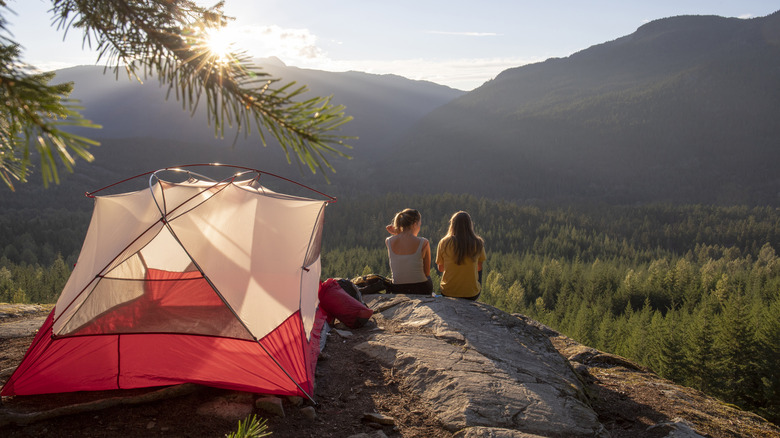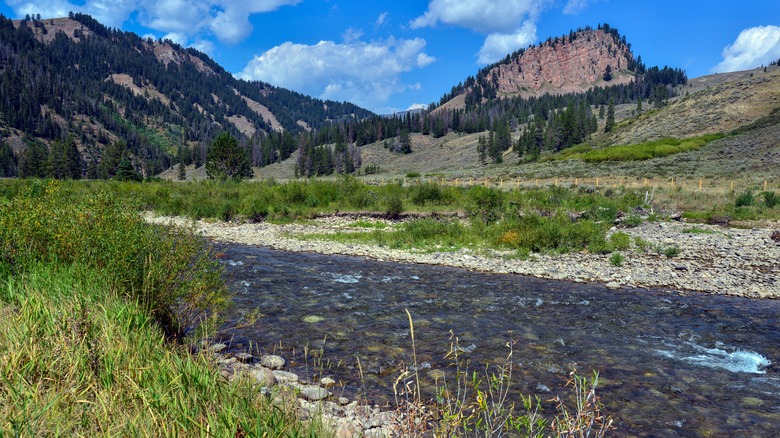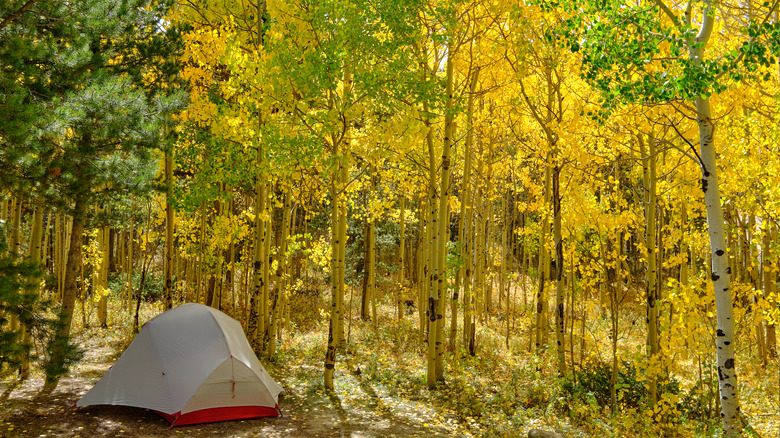The Best Way To Find Free Camping In The Most Beautiful National Forests In America
National forests tend to be overshadowed by the extensive National Park System in the United States. Many travelers often favor trips to some of the most beautiful places in America's national parks and overlook national forests entirely. Destinations like Yellowstone, the Great Smoky Mountains, and Yosemite are some of the most popular. But for those who are looking for an uncrowded alternative with equally breathtaking natural beauty, national forests are an excellent choice. What makes them even more appealing is the option to camp completely free of charge. Unlike national parks, which have designated campgrounds that often book up months in advance, national forests typically allow visitors to enjoy dispersed camping whenever (and often wherever) they wish. There are 154 national forests scattered all across the United States. Together, they encompass around 193 million acres, according to a 2023 Congressional Research Service report.
The undeveloped campsites within national forests won't have many of the amenities that you may be used to at established campgrounds. Don't expect bathrooms or hot showers, but if you're the type of traveler who doesn't mind roughing it for a few days in order to immerse yourself in nature, national forest camping is perfect for you. Sites are first come, first served, so in order to find the best free sites, you should arm yourself with information. If you're planning an epic camping trip, check out some of our best tips and tricks to finding free campsites in America's gorgeous national forests.
Discovering the most beautiful national forests
While both national parks and national forests are public lands, they have their differences. National parks are established mainly for the purpose of preservation and recreation, but national forests have multiple uses including conservation, recreation, and resource extraction. They are managed by the Forest Service, which falls within the Department of Agriculture, but they belong to you — and every other citizen of the United States.
National forests provide some of the best bucket list camping destinations for outdoorsy travelers and are located in about 40 states. Epic rock formations, mountains, waterfalls, and wild rivers are just a few of the many natural features to explore during your visit. In California, the Sierra Nevada National Forest provides a welcome oasis away from the bustling cities, and Los Padres National Forest allows you to camp overlooking the Pacific Ocean. White River National Forest in Colorado has 10 mountain peaks reaching over 14,000 feet and is much less crowded than the ever-popular Rocky Mountain National Park. Bridger-Teton National Forest in Wyoming is located under an hour away from Yellowstone National Park and features glaciers, rivers, meadows, and mountains. In North Carolina, a few hundred miles of the world-famous Appalachian Trail run through Pisgah and Nantahala National Forests. Hikers and campers can enjoy views of colorful fall leaves and sparkling waterfalls. Head to Washington state to visit the popular 2.5-mile-long Ape Cave located within Gifford Pinchot National Forest. Wherever you dream of traveling, you should check to see if there's a national forest located nearby where you can camp for free in tents, camper vans, and RVs.
Finding the best free campsites
Dispersed camping in a particular site at a national forest is permitted for up to 14 days in any 30 day period. Travelers looking to backpack in a wilderness setting, or those who are enjoying "van life" with an off-the-grid set up, can enjoy two entire weeks of a free place to stay instead of paying $25 to $40 per night for sites within designated campgrounds. It's a wonderful budget-friendly way to explore some of the country's most beautiful natural landscapes, but there are still some rules you'll need to follow when selecting a place to camp.
According to the Forest Service, "dispersed camping must not occur within 100 feet of water sources (rivers, streams, ponds, or wetlands) or within 100 feet of any road or system trail," and camping may be further restricted in some areas. Campers should also follow "Leave No Trace" guidelines. Usually, you'll be able to find well-loved campsites just off of the main road or along the smaller forest access roads. You can also choose to hike and backpack further into the wild and discover a place that is all your own. When you arrive, consider stopping to talk to a forest service ranger. They may be able to point out an excellent unused campsite. Another option is a variety of apps that offer maps of national forests with coordinates for some of the best dispersed campsites. Gaia GPS and The Dyrt are two of the most popular. Keep in mind that cell signal is often non-existent in national forests, so download your maps and routes before you arrive.


